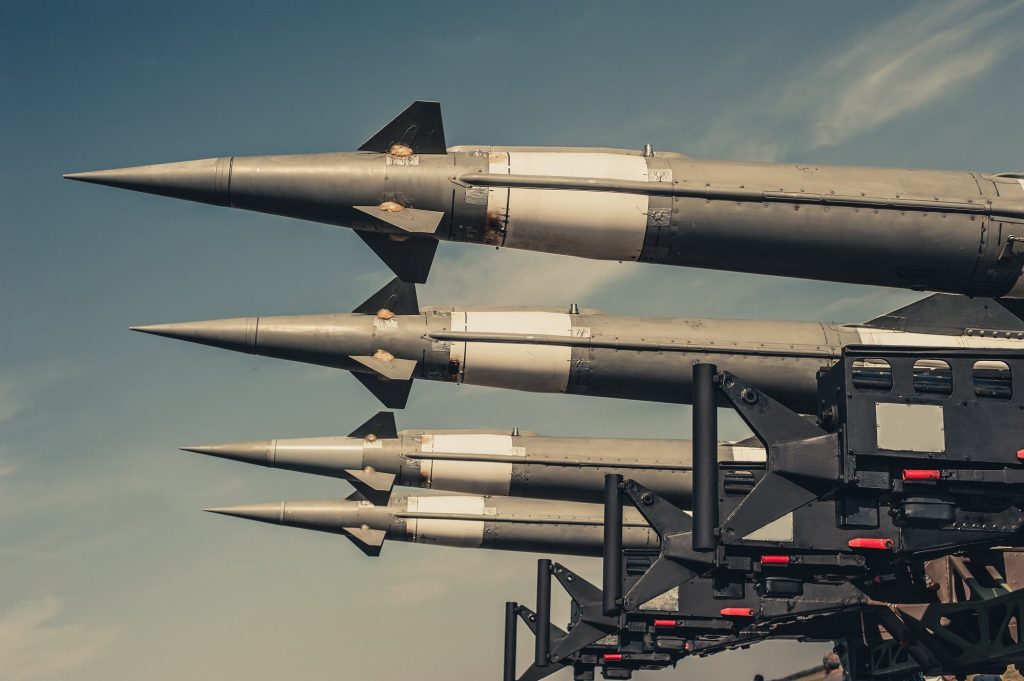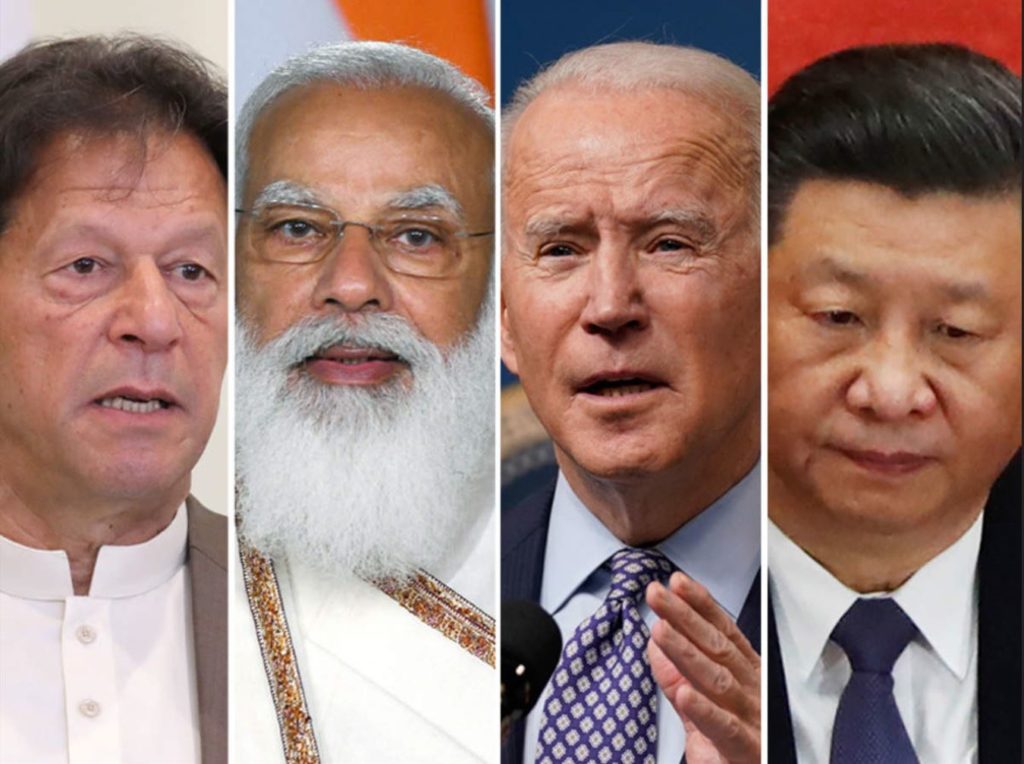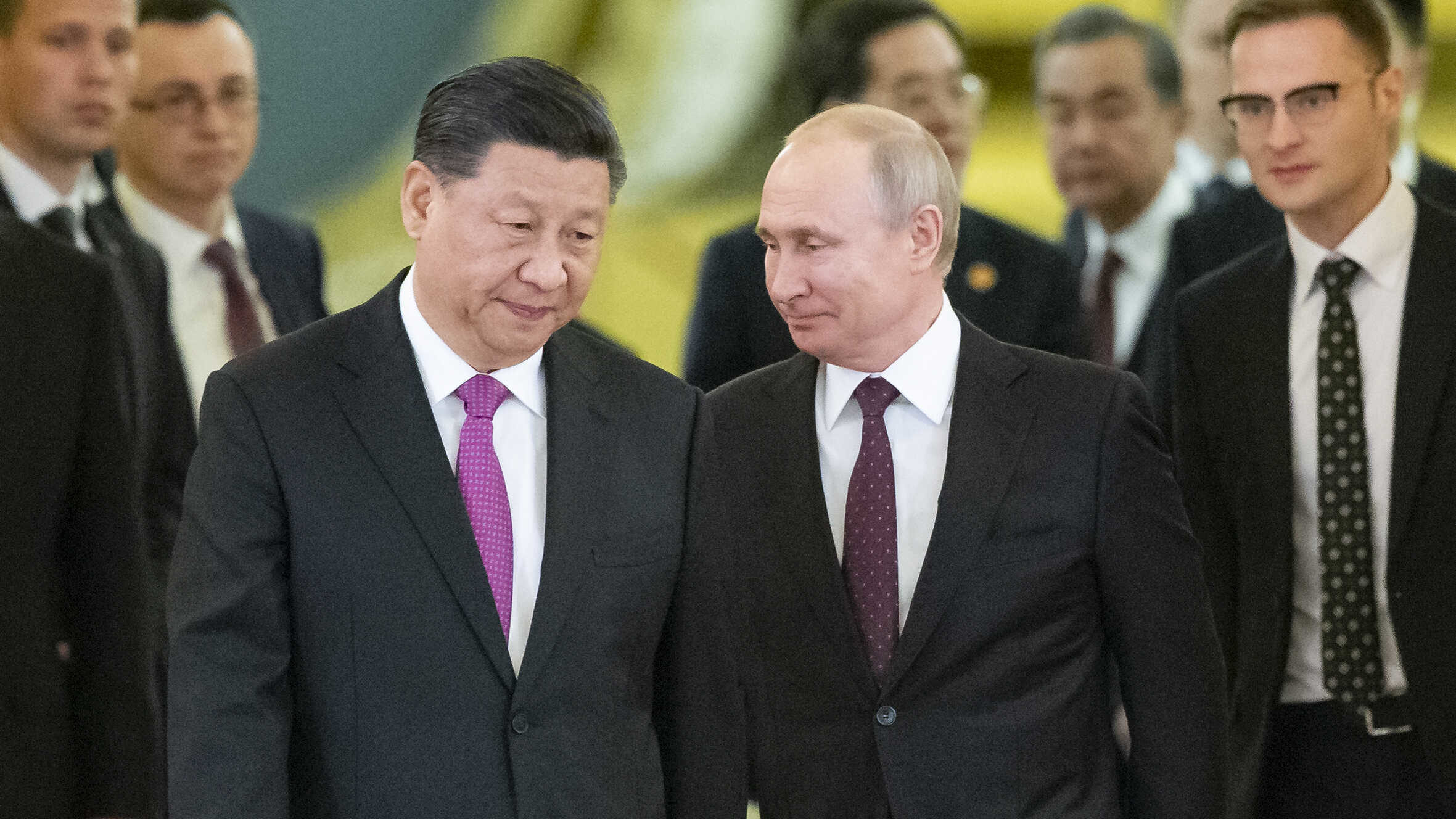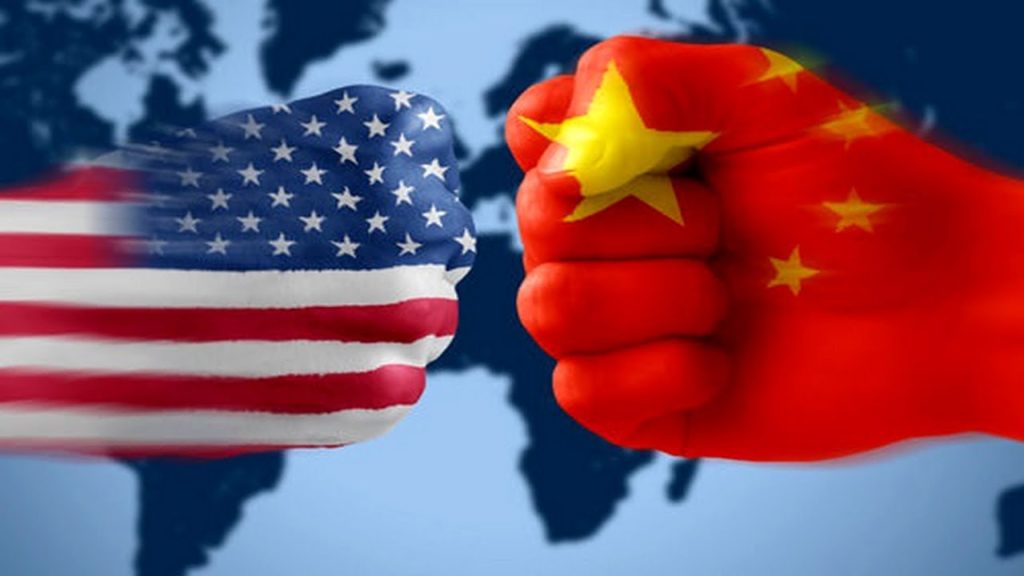The role of the great powers in world politics always affects the multidimensional interactions of various states in different regions, the politics of the Cold War is an example of this aspect. The bipolar dimension of the international system under the hostile designs of Moscow and Washington affected the politics of different regions while avoiding direct confrontation. The absence of a direct clash between the US and the Soviet Union was because of the presence of nuclear weapons in their arsenal. In other words, the possession of nuclear weapons by both contestants under the Communist-Capitalist divisions of the Cold War ruled out the possibility of a direct war. Akin to Cold War politics, the United States also introduced its global unilateral designs for expanding Washington’s global sphere of influence under the ‘War on Terror’ slogan. The US-sponsored global fight against terrorism and its worldwide promotion further validated the claims of expanding great power influence across the world and its impact on different regional politics. The theoretical explanation of these developments can be studied as the interconnectedness between regional and global politics. In other words, literature on world politics sometimes treats it as a dependency of regional politics on international politics. Therefore, this article tries to address the growth of South Asian politics under the great power politics where the role of regional powers cannot be separated from the changing dimensions of great power interactions. It attempts to adopt a regional level approach to study world politics where the regional and global levels interactions of states are strictly interconnected. Under this feature the changing nature of great power interactions cemented in their contesting geostrategic interests has always remained a key driver in the politics of different regions. It is an appropriate explanation of a close interaction between system-level and regional-level political developments, resulting in an increasing role of extra-regional powers in different regional politics. It is the nature of international politics that it rarely supports the prevalence of the status quo in the world. In contrast to the status-quo, the leaders of great powers always try to enhance their influence in the international system over the expanse of others states located in different regions.
Under the changing attributes of world politics, the evolving power gaining and power maximising characteristics of great powers shape different scenarios at the international level. The impact of great power politics compels states of different regions to change their standing in their domestic regions, where South Asia is not an exception. South Asian regional politics cannot be divorced from international politics due to the increasing reliance of India and Pakistan on external players. The ever-increasing points of disagreement between both nuclear contestants of South Asia is fascinating, so much so that it propels extra-regional powers towards the nuclearised subcontinent. This pattern can be analysed during the Cold War when the India-Pakistan hostility let the US-Soviet global confrontation focus on South Asia. In this way, the growth of India-Pakistan rivalry, specifically in the South Asian region, can be appropriately examined under the influences of great power politics. The opposing designs of Moscow and Washington for global dominance was inherited in their conflicting interest. It was the quest for maintaining global hegemony that involved China in the South Asian great power competition. In other words, the history of conflict between New Delhi and Islamabad disturbed the regional security environment of South Asia under the shadows of great power politics. The mainstream literature on world politics calls this dimension of the international system the ‘regional international politics’ under the shadows of interconnectedness between regional and global politics. The main academic debates of International Relations also validate the spread of great power politics across the globe. The regional dynamics of South Asia, such as the conflicts in Kashmir and Afghanistan, geographical proximities of China and Russia, and hostility between India and Pakistan, created South Asia as a gravitational point of global world politics. Furthermore, Indian hegemonic ambitions and Pakistan’s counterbalancing role further became a centre of great power politics, no one was interested in addressing the reasons behind the protracted clash between India and Pakistan.
Analogous to Middle Eastern regional politics, where the influence of extra-regional players always remained an important feature of regional power politics, South Asian regional politics witnessed varying patterns of great power conflicts throughout history. The continuing role of external players in the South Asian nuclear order created a security dilemma in which New Delhi and Islamabad have been involved in an unending arms race with the help of external players. In this case, India’s growing strategic ties with different nations across the globe and its increasing nuclear agreements with different nations are appropriate examples. The Indian quest for massive weaponization under the broader rubric of its regional hegemonic ambition compelled Pakistan to scour the international community for strategic purposes. On the other hand, the great powers focus on the South Asian region for enhancing their geostrategic interests. In contrast to Pakistan’s peaceful approach for stabilising the regional strategic balance, the Indian aspiration for dominating the region provided sufficient space to the great powers to intervene in the regional politics of the nuclearised subcontinent. In this way, the strategic collaborations of New Delhi and Islamabad with other states beyond their home region connected South Asian regional politics to international politics. The same features made South Asia a regional sub-system, dependant on the changing nature of international politics. This situation further makes South Asia an exception in world politics due to the dependence of its two nuclear powers on external players.

Similar to the hostile designs of the global geostrategic contest between the US and USSR, the development of the Soviet-less international system allowed the United States to support the transformation of global power politics from bipolar to unipolar dimension. The subsequent developments in the post-1998 and post-9/11 environments again focused on the South Asian region, where India and Pakistan became the centre of global political debate. An increasing American antipathy towards China and Russia propelled the authorities from Beijing and Moscow to focus on their South Asian nuclear allies. This scenario re-verified the claims of South Asian dependency on global power politics due to intense regional competition between both nuclear powers and immediate neighbours. As a result, the situation created a unique combination of the power struggle between international and regional players. The emerging India-US strategic partnership pushed Pakistan towards China, and the diplomatic coordination between Beijing and Islamabad explored different levels of economic collaborations. The India-US and Pakistan-China alliances depict the interstate bilateral relations between the pairs of nuclear powers, which could easily be considered the global power politics’ influence on the Asian regional sub-system. Under the shadows of an unending geostrategic struggle between world powers, the clash between China and the US for global hegemony structured the regional hostility between Islamabad and New Delhi. The Chinese economic rise and its decision to conclude a mega corridor economic project with Islamabad is an appropriate response to a multilevel strategic collaboration between New Delhi and Washington. The American-Indian strategic alignment responds to Beijing’s economic emergence because US state officials have translated the Chinese economic rise in world politics as a potential threat to Washington’s global standing. As a powerful state from South Asia, Beijing’s choice of Pakistan activated the American strategic cooperation with India. Due to its increasing opposition to neighbouring China and Pakistan, New Delhi gained a significant role in the American South Asian policy. So, the norms of interconnectedness between regional and international politics attached the New Delhi-Islamabad conflict to the Washington-Beijing confrontation.

In the presence of increasing US-China confrontation on global standing and its South Asian directions, the role of Russia cannot be ignored. The increasing Russian role in world politics cemented in Moscow’s ambitions for remaining a great power in the international system has been considered a potential threat by leading American political authorities. Leading American State officials are determined to analyse the changing dynamics of global power politics where the US withdrawal from Afghanistan cannot be overlooked due to its symbolic implications in the international system. Analogous to the end of the decades-long Cold War in the form of the dismantlement of the Soviet Union from world politics, the American withdrawal from Afghanistan will provide sufficient opportunities for Russia and China in the South Asian regional politics. In this way, the Chinese and Russian emergence in world politics generally, and South Asia particularly, has become an undeniable feature of contemporary world politics. Thus, the future of world politics cannot be visualised without the increasing role of Beijing and Moscow, which is dubbed by the international community as ‘two against one’ or ‘one against two’. The rise of both great powers will further hamper the unilateral structure of international politics and its relevance to the American hegemonic ambitions. As a result, the scope of peace and stability in the South Asian nuclearised subcontinent cannot be envisioned without seriously considering the South Asian policies of Beijing and Moscow.
Based on the history of Cold War politics, the American opposition to increasing Russian role in world politics has created a cooperative interaction between Beijing and Moscow. The hostile approach of America towards the China and Russia and Washington’s quest for opposing the counterbalancing potentials of China and Russia has become an essential feature of contemporary world politics. Russian leadership does not accept the dominating American role in world politics, intensifying the politics of different regions, including South Asia. The persistently growing American anti-Chinese and anti-Russian positions have augmented the existing basis of China-Russia cooperation on different fronts. Moreover, the US withdrawal from Afghanistan and South Asian extension of the Shanghai Cooperation Organization (SCO) have encouraged both Beijing and Moscow to engage in South Asia, where the regional politics is already witnessing threats to regional peace and stability due to the Indo-US strategic collaboration. Framing in another way, the South Asian security environment will face an intense power competition between China, Russia and the US. The contesting nature of great power politics and its prevailing effects on South Asian politics will unleash a new phase of power politics between Beijing, Moscow, and Washington. Moreover, the contemporary pattern of American strategic bilateralism with India is fracturing the scope of peace and stability in the nuclearised subcontinent while inviting other great powers in the nuclearised subcontinent. The American India-inclined South Asian policy has activated economic collaboration between China and Pakistan, parallel to increasing Russian cooperative interaction with Pakistan. In addition to Pakistan, the Chinese and Russian authorities have also signed various collaborative agreements with India.
The competitive nature of great power competition has immense potential for causing various unpredictable formats of great power politics. The rise of any major point of disagreement between Russia and China could add another dimension in the global power politics where the presence of Sino-Russian constructive cooperation could become a less significant feature of Beijing-Moscow cooperative bilateralism. In other words, the Sino-Russian alliances against the US-led global order will be marginalised due to the probable rise of a major conflict between Chinese and Russian leaders. The contesting geopolitical interests of both states, with the diminishing role of Washington from world politics, will try to create a new South Asian regional order beyond American influences. Most probably, the quest for replacing the US in the unipolar structure of the international system could cause competing Chinese and Russian geopolitical interests. Therefore, the emergence of any clash between Beijing and Moscow will change the course of international history, the probability of emerging strategies of Beijing and Moscow against each other cannot be completely overruled due to the contesting nature of great power politics and its varying levels of conflicting and cooperating interactions between great powers. Undoubtedly, the prospects for the rise of a major clash between Chinese and Russian authorities might be very low, however, the possibility of confrontational communication between Beijing and Russia cannot be overlooked. The rise of such a scenario can reduce the scope of the Chinese-Russian alliance against the United States, or the ‘two against one’ situation will start disappearing.

The trilateral strategic competition between the US, China, and Russia is a unique combination of multidimensional economic and strategic contests structured on a ‘two vs one’ scenario where the changing dynamics of trilateral competition between three nuclear powers will change its nature. The contemporary pattern of a three-state interaction based on the ‘two vs one’ principle reflects the Chinese-Russian cooperative alliances to offset US pressures on the Asian political order. The contemporary nature of world politics may witness the confrontational models of China and Russia against each other over the nature of the international power structure. The conflicting geostrategic interests of both nations will alter the contemporary arrangements of ‘two vs one’ politics which will be considered an opportunity for the US. Witnessing the decades-long history of the bipolar international system under the shadows of Washington and Moscow cold war hostility, the United States considered it an appropriate opportunity for weakening the Soviet Union. It was a historical Sino-Soviet split, mainly structured in ideological differences, that became a territorial clash in 1969. The border conflict between China and Russia’s two biggest communist states resulted in an up-gradation of Sino-US relations beyond their strategic differences. The Chinese Ping-Pong diplomacy, which resulted in a Chinese visit of American authorities, attempted to redefine between Washington and Beijing through discussing various strategic and diplomatic overtures in 1972. The visit of American authorities was an attempt of Washington for gaining leverage over its conflicted interaction with the Soviet Union. It was the main turning point of the great powers competition under the rubric of Cold War politics which impacted South Asian regional politics significantly. The United States took advantage of Pakistan’s close cooperative ties with China and initiated a normalisation phase with Beijing. The role of Pakistan in facilitating the US and China for initiating a phase of normalisation in their diplomatic interaction was a depiction of the correlation between power politics and regional and international levels.
Based on the history of trilateral politics between China, the US, and Russia, it can easily be maintained that the role of great powers will shape an unexpected global competition in world politics where the South Asian regional order will be the prime focus of global power politics. The India-Pakistan hostility has remained dependant on the changing dynamics of trilateral strategic competition between three nuclear powers, in which the possibility of a new format of the competition will redefine the notion of ‘two against one’ or ‘one against one plus one’. The ‘one against one (the US vs China) plus one (Russia) is modern alimenting of great power politics which can offer a great deal of alteration, rooted in the stabilisation of unipolar nature of international system while desire for replacing each other. The competing behaviours of the three powers have varying levels of disagreements in their bilateral dealings. The combination of minor and major disagreements in the bilateral relations of three states could change its strength at the international level by affecting the regional strategic order of South Asia. In this way, the South Asian leaders need to follow a comprehensive strategy for maintaining foreign relations with the great powers without jeopardising the scope of peace and stability in South Asia. The great responsibility lies on the Indian and Pakistani governments because of their nuclearised hostility. The leadership of both nuclear neighbours is required to realise the negative impacts of great power politics on the South Asian security environment. In addition to rationalising the nature of international South Asian politics, New Delhi and Islamabad should analyse the nature of external engagement in the nuclearised subcontinent where Washington’s strategic assistance will be a less-preferred approach in South Asia due to Beijing’s economic South Asian policy. An impartially independent approach in the India-Pakistan rivalry will support the Chinese economic intervention in South Asia, which will let the South Asian states improve their economic conditions with the help of Beijing instead of accepting Washington’s strategic supplies. Moreover, Chinese-sponsored economic collaboration with the South Asian nations will allow regional states to involve in bilateral trading collaborations instead of developing their strategic disagreements against each other.

Presently, the United States is critically examining the growing cooperation between China and Russia without showing any intention of becoming an active participant in Sino-Russian bilateral collaboration. Moreover, the American approach for managing nuclear affairs of India-Pakistan is persistently intensifying the regional security environment while jeopardising the broader scope of peace and stability. The contemporary American strategic supplies to New Delhi are leaving devastating impacts on South Asian regional politics. In contrast to Washington’s strategic engagement in the nuclearised subcontinent, Beijing is pursuing a policy of active economic bilateralism in South Asia. Therefore, the growth of the South Asian sub-system could change its nature by altering the directions of its dependence on the international system. An appropriate analysis of the contemporary nature of global world politics and its probable future developments will help India and Pakistan protect the South Asian regional sub-system from the worse impacts of global power politics. This approach will enable New Delhi and Islamabad to craft different bilateral solutions to the South Asian problems at the regional level. The regional solutions to the decades-long problems of the subcontinent will help ensure the scope of peace and stability in the nuclearised subcontinent through various economic means, mainly sponsored by China.





